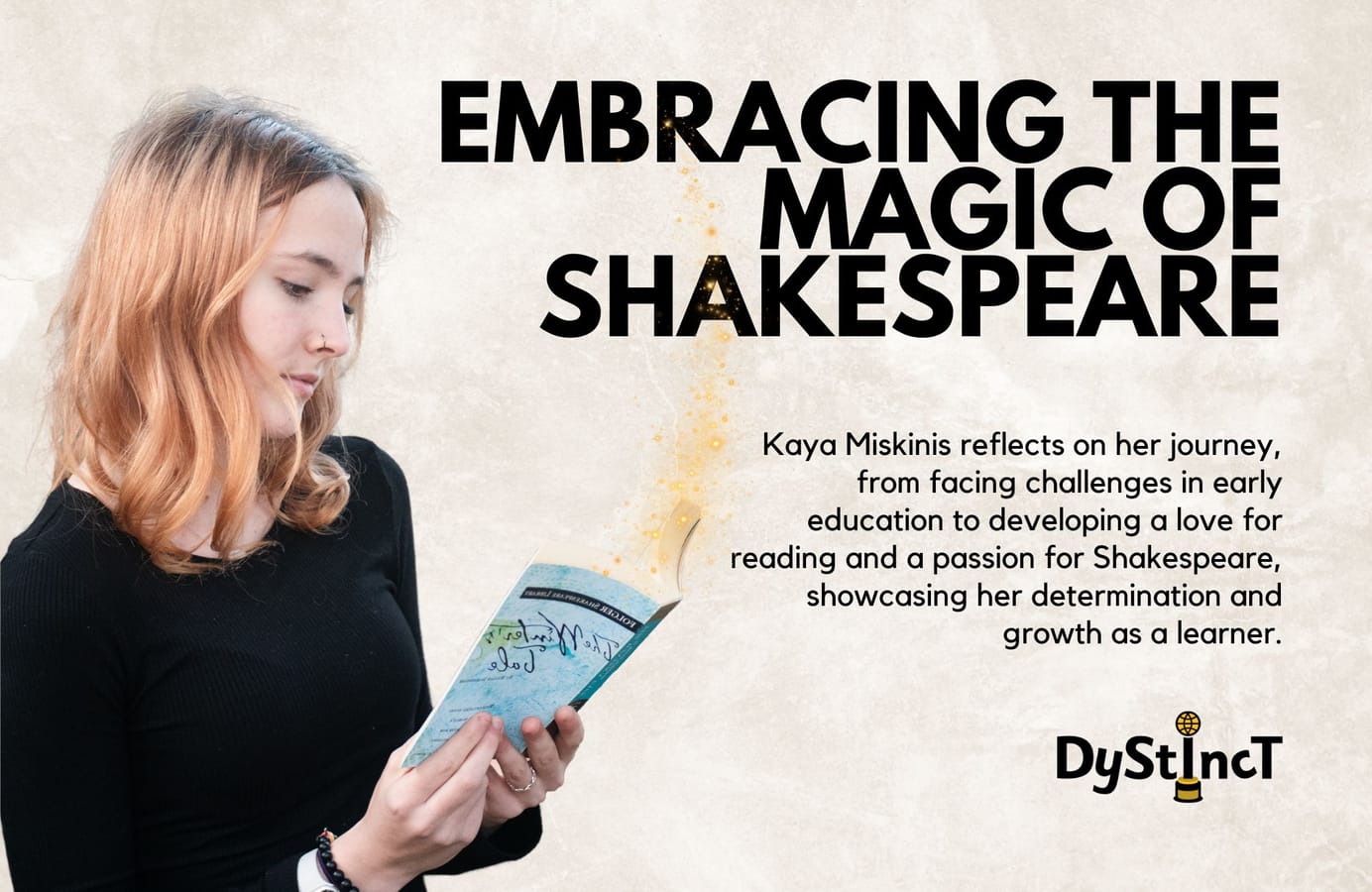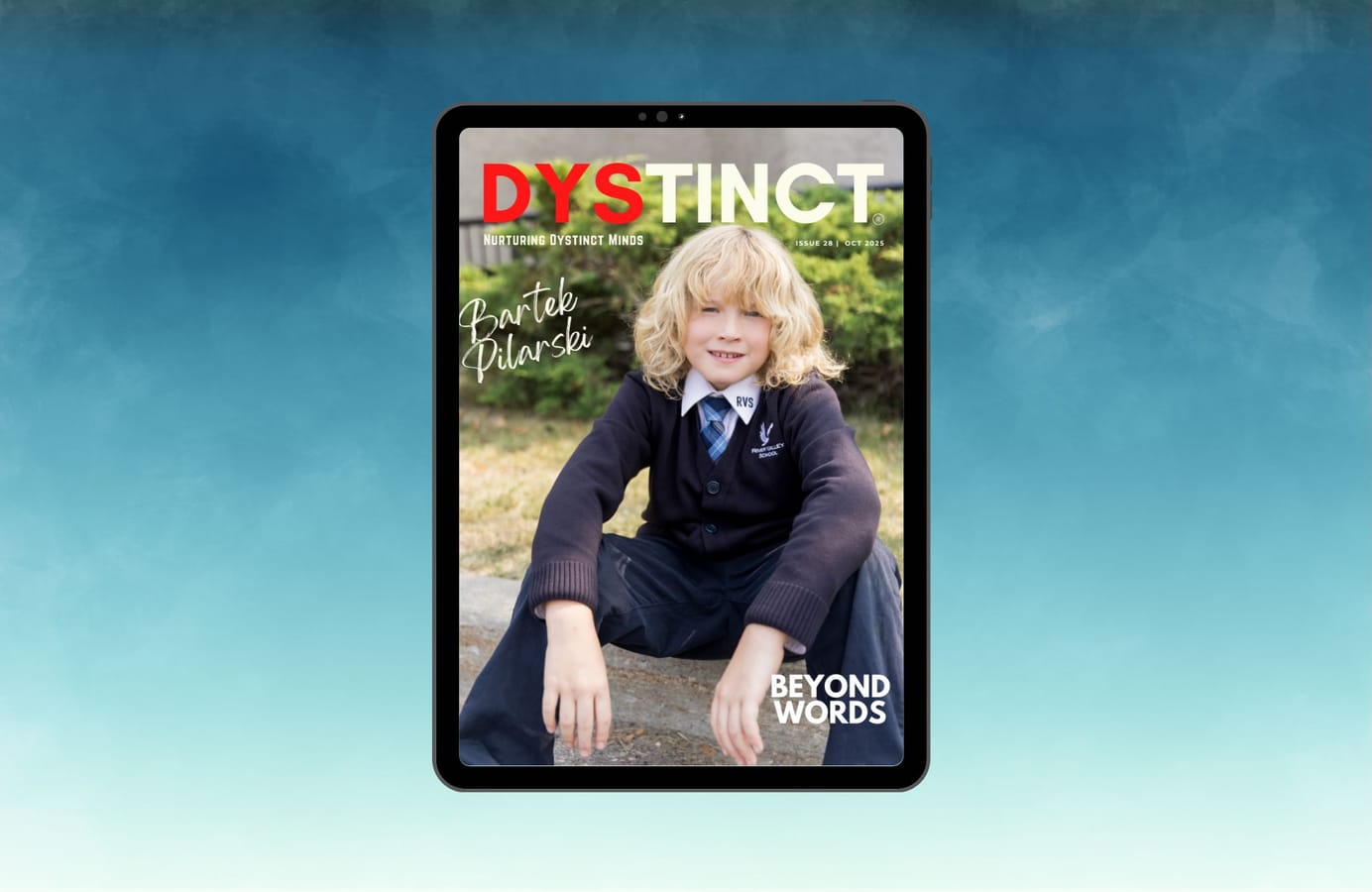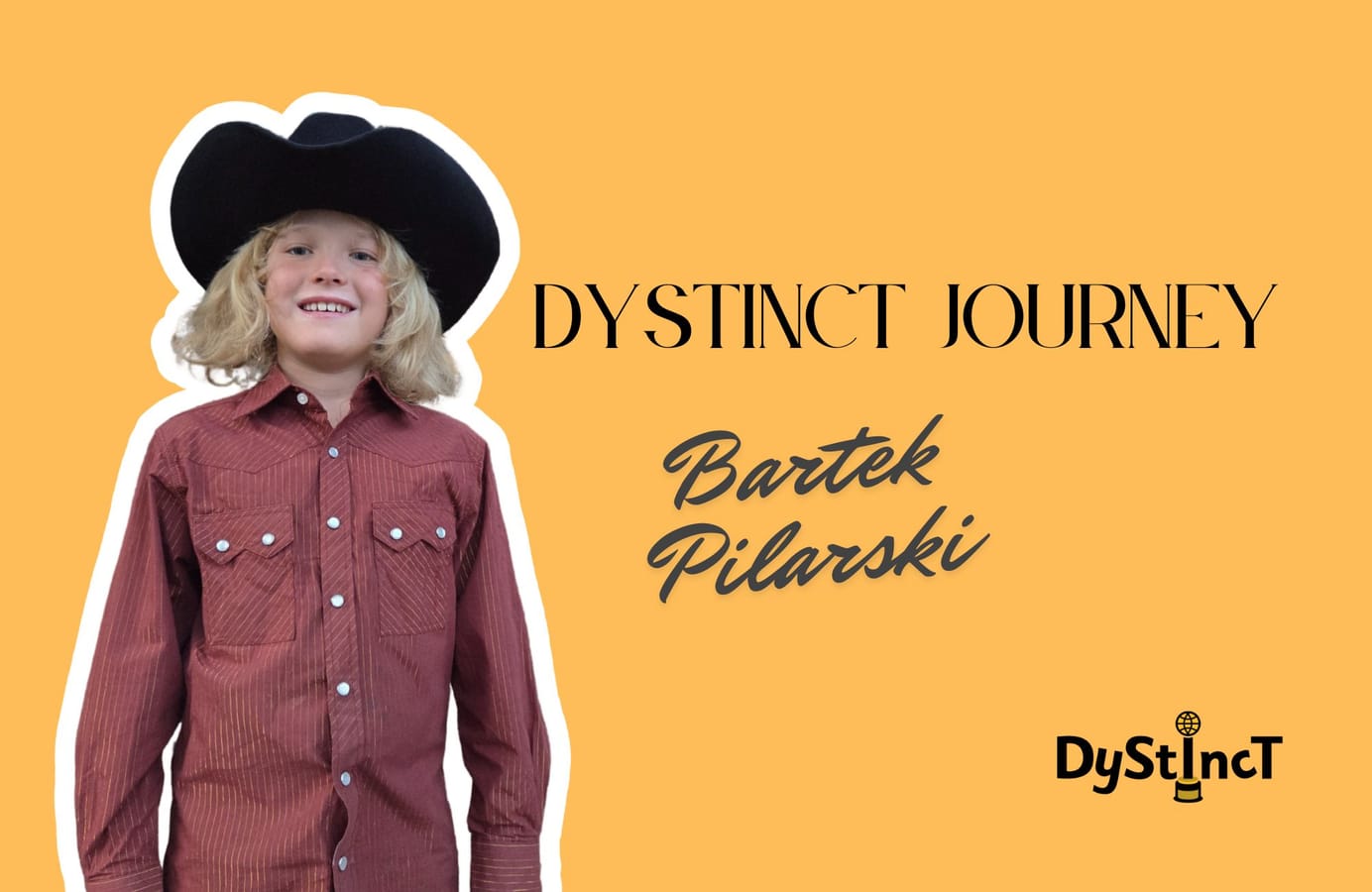
Issue 19: Embracing the magic of Shakespeare | Kaya Miskinis
Kaya Miskinis reflects on her journey, from facing challenges in early education to developing a love for reading and a passion for Shakespeare, showcasing her determination and growth as a learner.
The Globe Theater looms in the distance. The sun is going down, and there is a chill in the air. There is a long bridge, and we can see the theater from far off. As we get closer, we start walking faster and faster. Standing in the place where Shakespeare's plays were originally performed is a dream come true for me.
I never thought that I would like or even be able to read Shakespeare. I was diagnosed with dyslexia when I was in the first grade, and for the next few years, I worked hard to try to catch up to the level of my classmates. This felt nearly impossible. By the time I was able to read picture books, they were reading chapter books. When I finally read my first chapter book, my classmates were reading a whole series.
In second grade, my class had a system where students could sign up to read books from a series, and they would be paired up with a reading buddy who would also read the same series. The teacher had a number of choices, including The Boxcar Children and The Goosebumps Series. I have always loved scary stories, and I really, really wanted to read The Goosebumps series. So, when it was time to sign up, I excitedly chose Goosebumps. But my teacher told me I couldn't choose those books because they were too hard for me. Instead, I had to read the Pete The Cat series, which are picture books designed for beginning readers. Since everyone else could already read, I had to read Pete the Cat alone in the corner of the room every day during reading group time. It was embarrassing, and I hated that I had to read alone when everyone else had a partner. I especially hated that I couldn't choose to read the books that I was interested in.
Experiences like this made me want to work harder so that I would fit in with my classmates and not be left out. I started reading The Bailey School Series because my mom had most of them from her classroom, and while they weren't The Goosebumps books, they were mysteries, and they kept me motivated to keep on reading.
I especially hated that I couldn't choose to read the books that I was interested in.
When I was in seventh grade, I changed schools. My new school was a small, private school and my teacher was a Folger's Fellow, which basically makes her an expert on Shakespeare. I was nervous at first when we approached our first Shakespeare play. I was worried because we had to read out loud, and I was afraid that the other kids would make fun of me. But my classmates were really supportive, and I ended up loving Shakespeare and finding my element.
This post is for paying subscribers only
SubscribeAlready have an account? Log in


